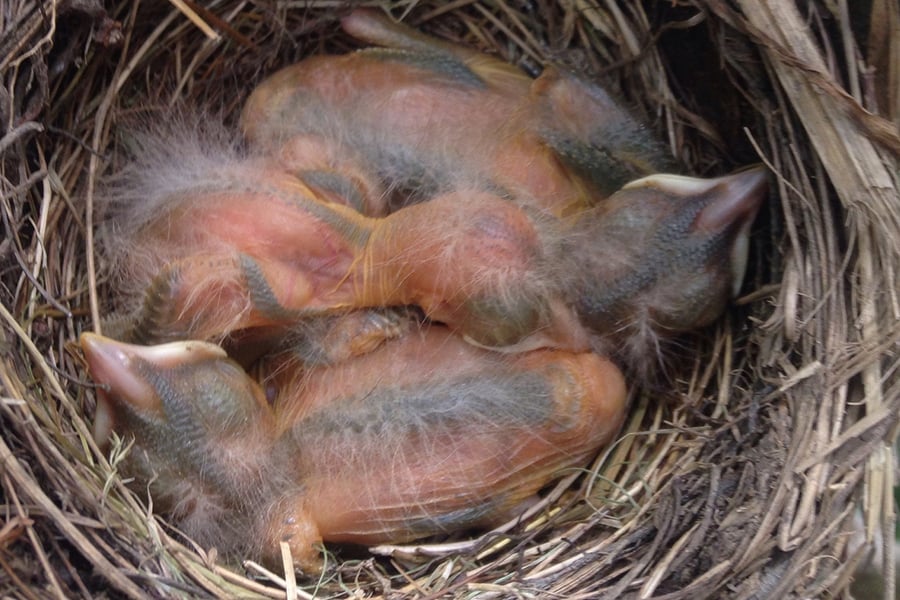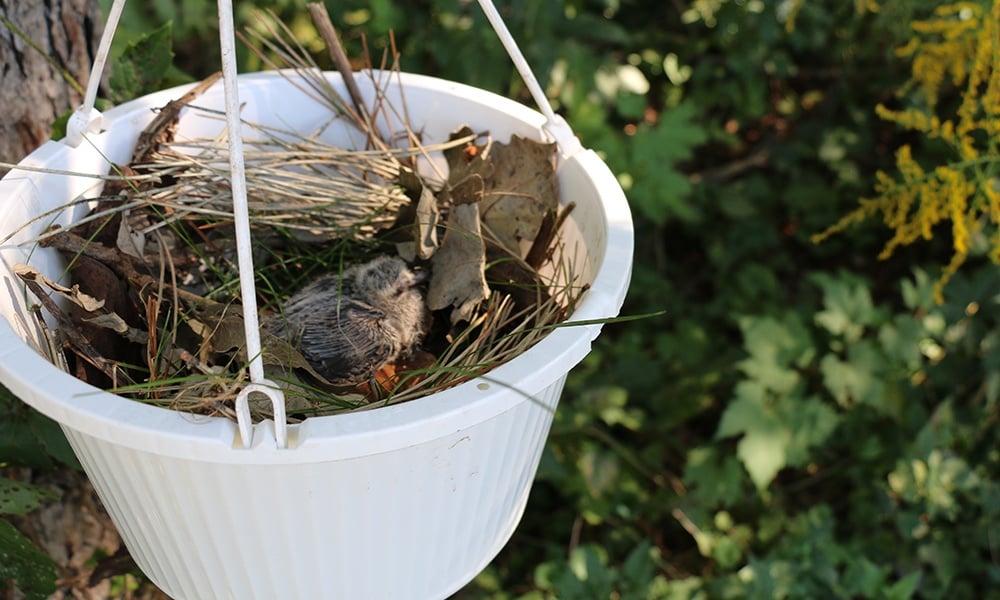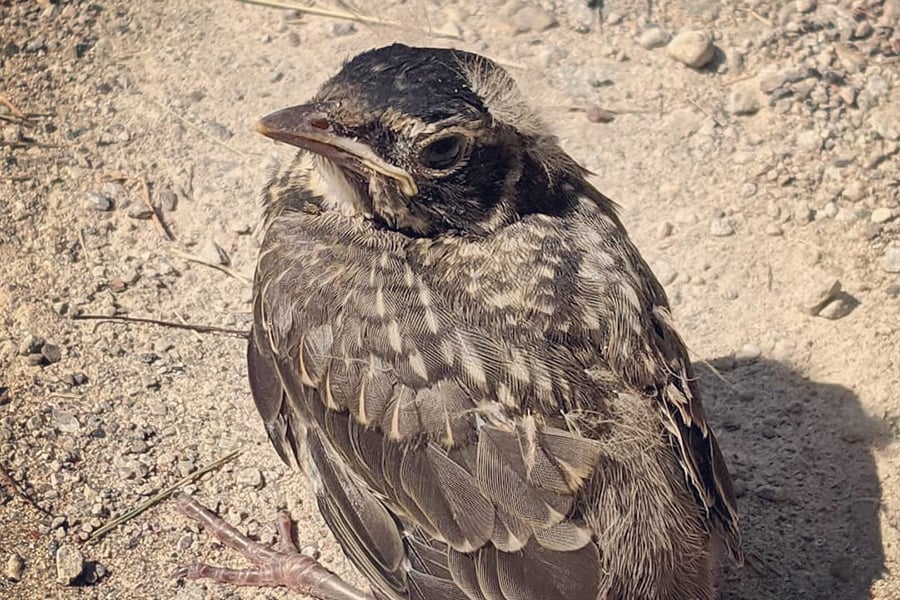I Found a Baby Bird. What Should I Do?
If you find a baby bird, first call the DuPage Wildlife Conservation Center at 630-942-6200 to determine if the animal truly needs assistance. Recordings provide information after hours, and additional assistance is included on this webpage.
Signs a Baby Bird May Need Medical Help
- Featherless or mostly featherless bird on the ground
- Obvious bleeding
- Obvious fracture
- Severe head tilt
- Swollen, crusty, and red eyes or obvious eye injury
- Obvious maggots or parasites
- Any young duck, goose, or other waterfowl
How Do I Help a Bird That's Fallen Out of Its Nest?
Is it a nestling?
If it's featherless or mostly featherless it's a nestling.
A nestling should be in a nest. If the original nest is intact and accessible, carefully place the baby inside. Adults have a poor sense of smell and strong parental instincts, so they won't abandon a baby if you touch it. Do not provide any food or water, though. A hungry baby will chirp, helping its parents to find it so they can continue providing care.

These robins are nestlings.
If the original nest is too high, destroyed or cannot be found, make a replacement nest.
- Get a container with drainage holes on the bottom.
- Line it with natural materials, such as remnants from the old nest, grass clippings, or dry leaves.
- If you're using a plastic container, poke four holes on the sides. Take four pieces of strong string, twine or rope and tie one end of each through each hole. Tie the four remaining ends together to make a hanging basket.
- Place fallen eggs or nestlings in the makeshift nest. If the container is large, first place the birds in a smaller container, such as a yogurt or butter container, and then place that inside the larger lined one.
- If you can see the old nest but can't reach it, place the replacement nest as close as possible — ideally within 10 feet. Birds locate their nests visually.
- If you cannot reach a branch, get a tall gardening shepherd's hook and hang your replacement from that.
- If the parents do not return within 24 hours, call the DuPage Wildlife Conservation Center at 630-942-6200.

Is it a fledling?
If it's mostly feathered and able to hop on the ground it's a fledgling.
If you find a bird on the ground with most of its feathers and it looks healthy but unable to fly, leave it alone and watch from a distance for its parents. It's a fledgling (that is, an older bird that can't fly but can perch and hop).
Do not move the fledgling from the general area where you found it. (If you must move it however, place it in a bush or low tree a few feet from where you found it.) Its parents are most likely watching nearby. Do not provide it any food or water. It will chirp for food, which will help its parents to locate it.
Depending on the species, a fledgling lives on the ground for about two weeks. While it's learning to fly, its parents will feed and care for it and teach it how to protect itself from predators. During this time, the parents may swoop by or squawk at people or animals that get too close.

This robin is a fledgling.
The Migratory Bird Act
All native birds — a category that includes native songbirds — are protected by the 1918 Migratory Bird Treaty Act. It is illegal to:
- Possess birds — dead or alive — or their nesting materials, eggs, feathers, or bones without proper permits from the U.S. Fish and Wildlife Service and Illinois state
- Harm or kill a native bird
- Remove or destroy nesting material once a bird has laid an egg
- Move young from a nest
The law does not protect nonnative European starlings, house sparrows, or pigeons.